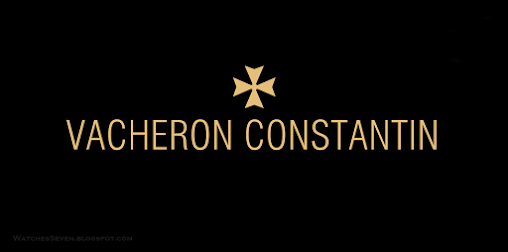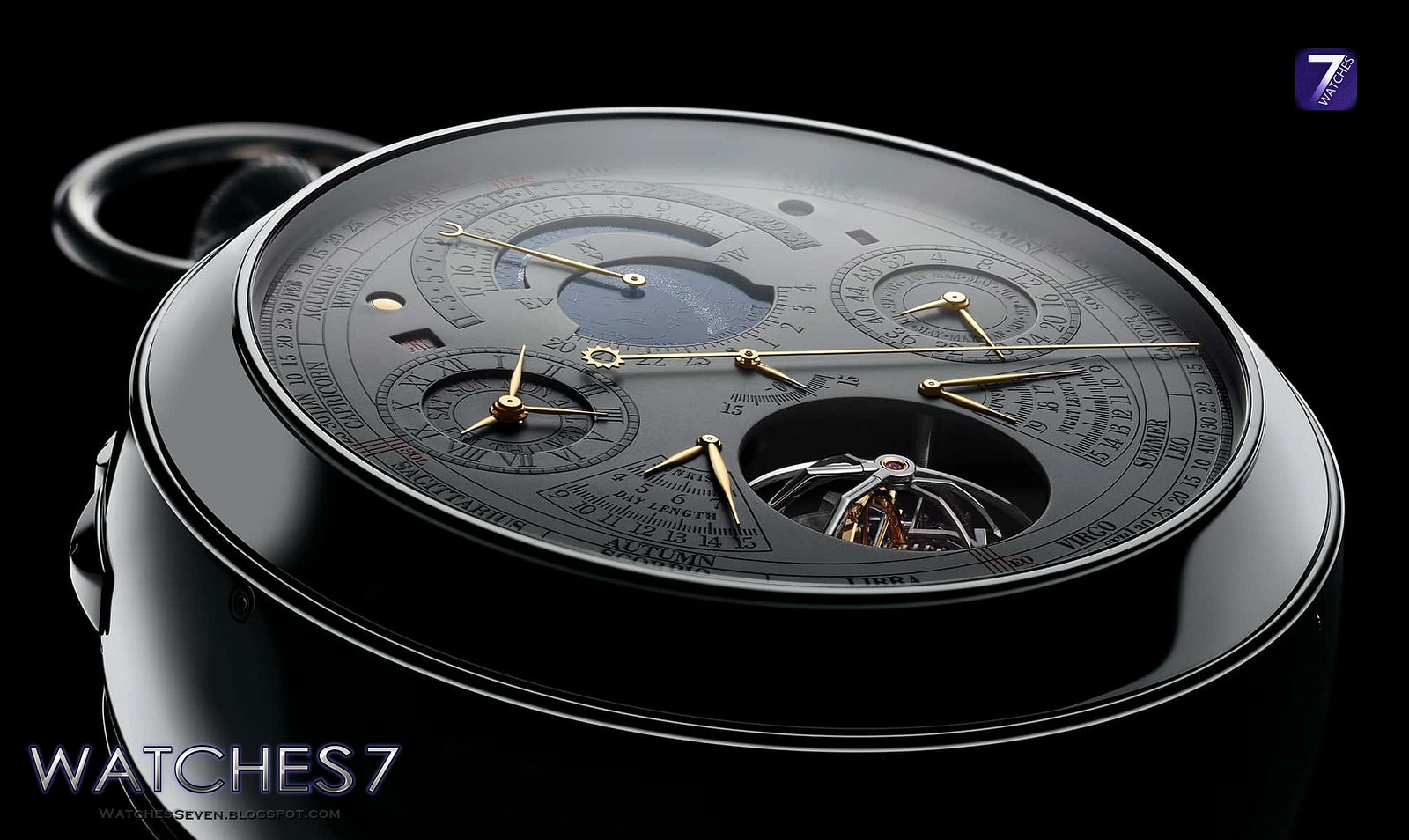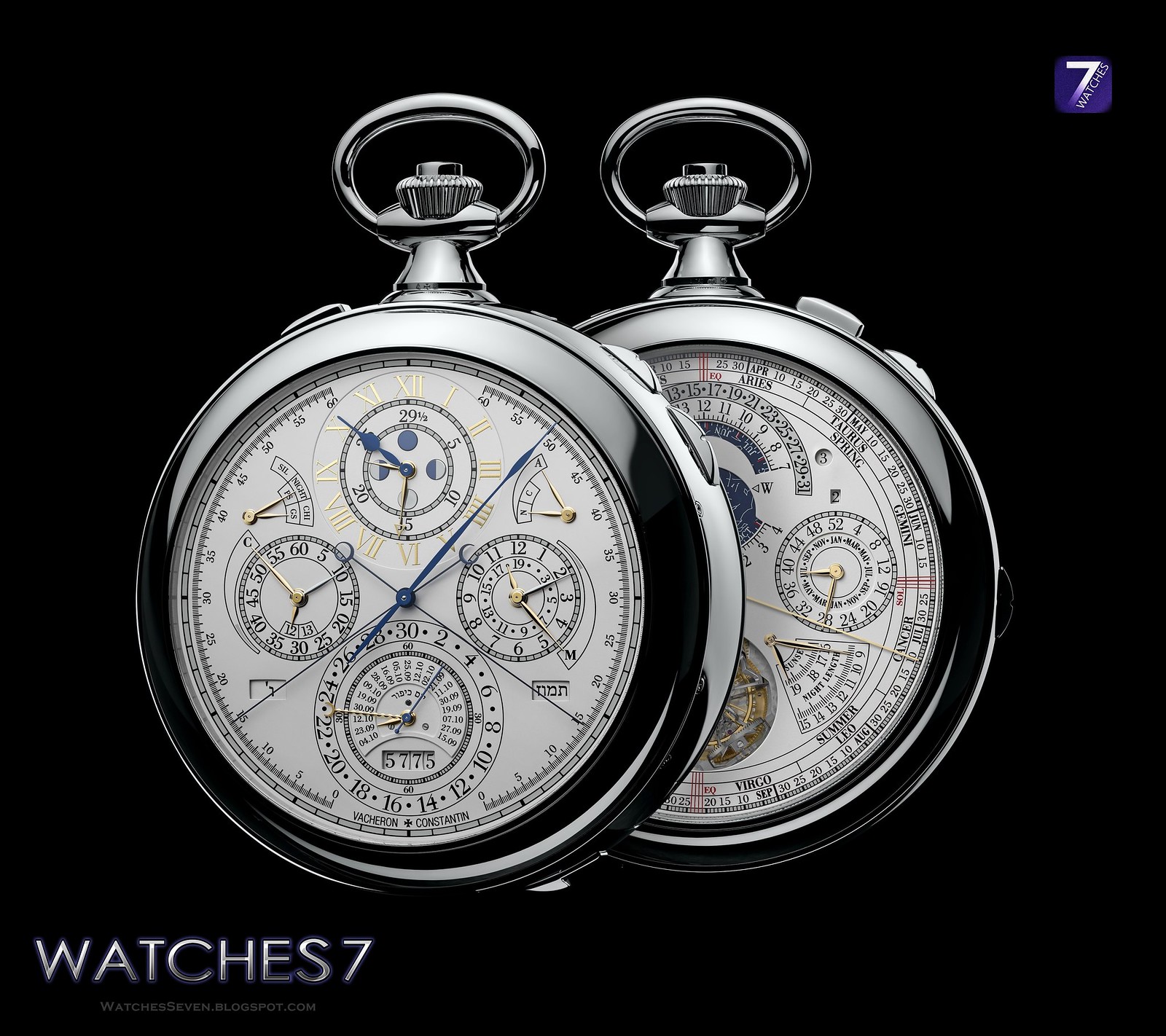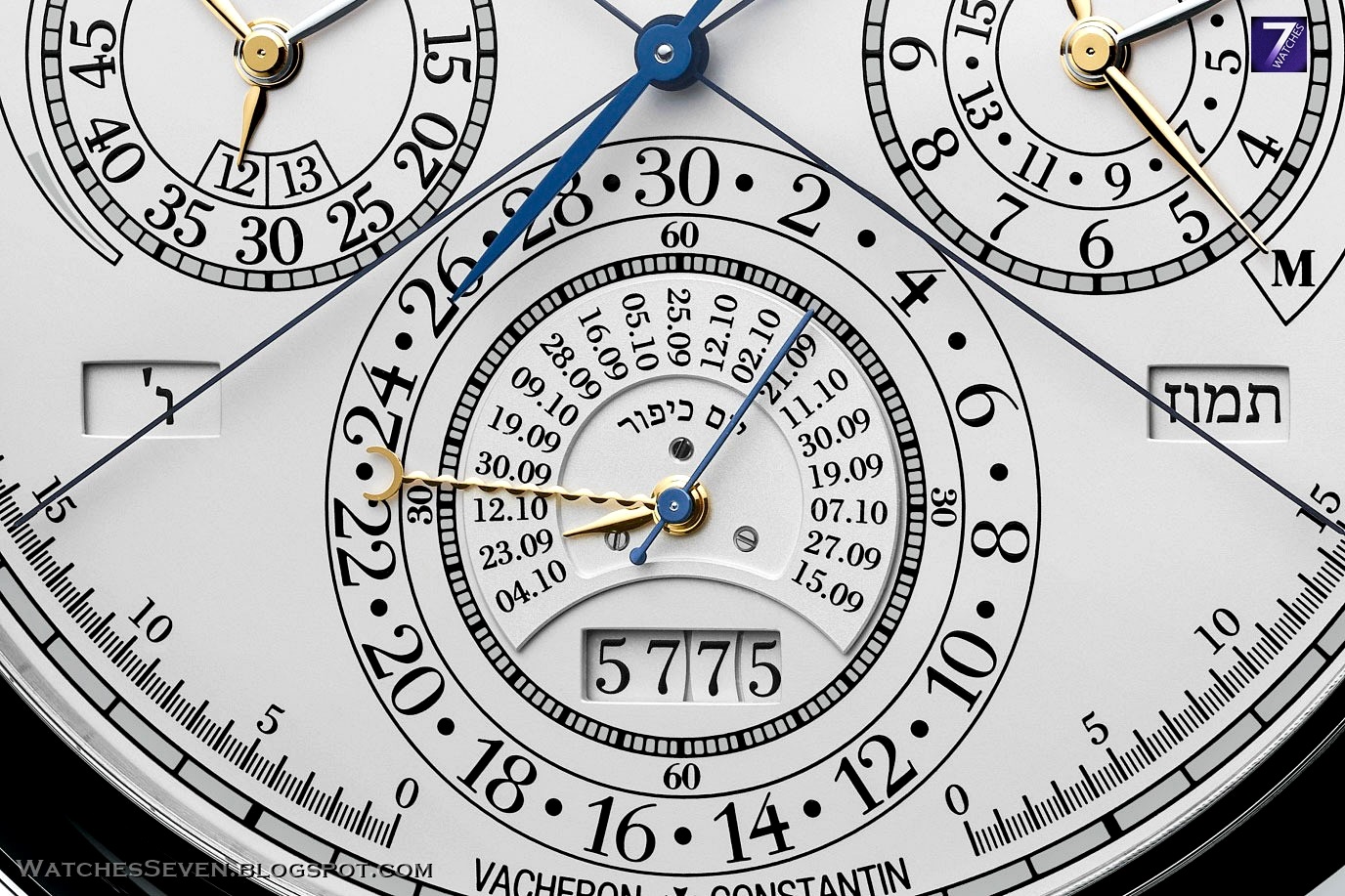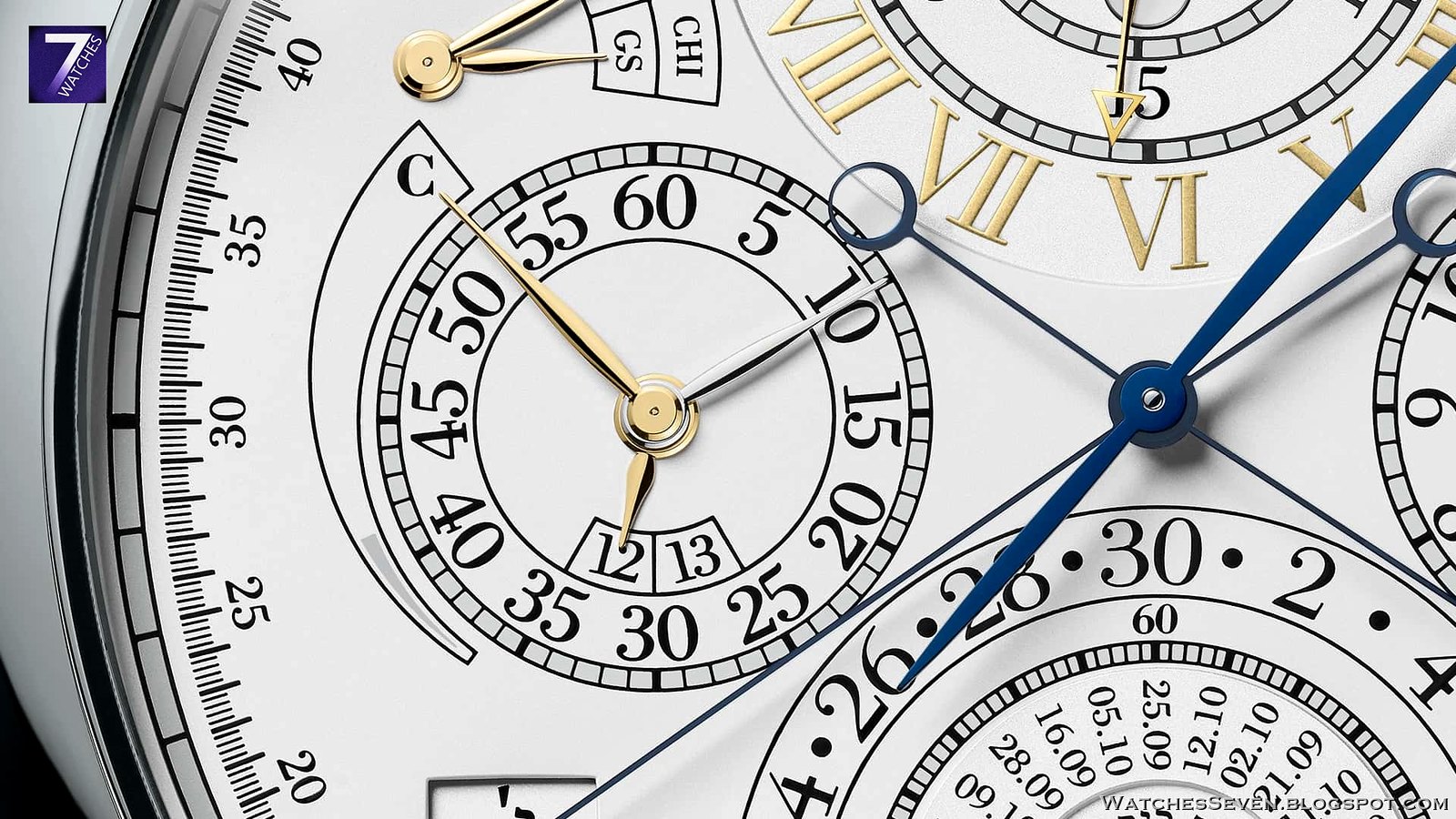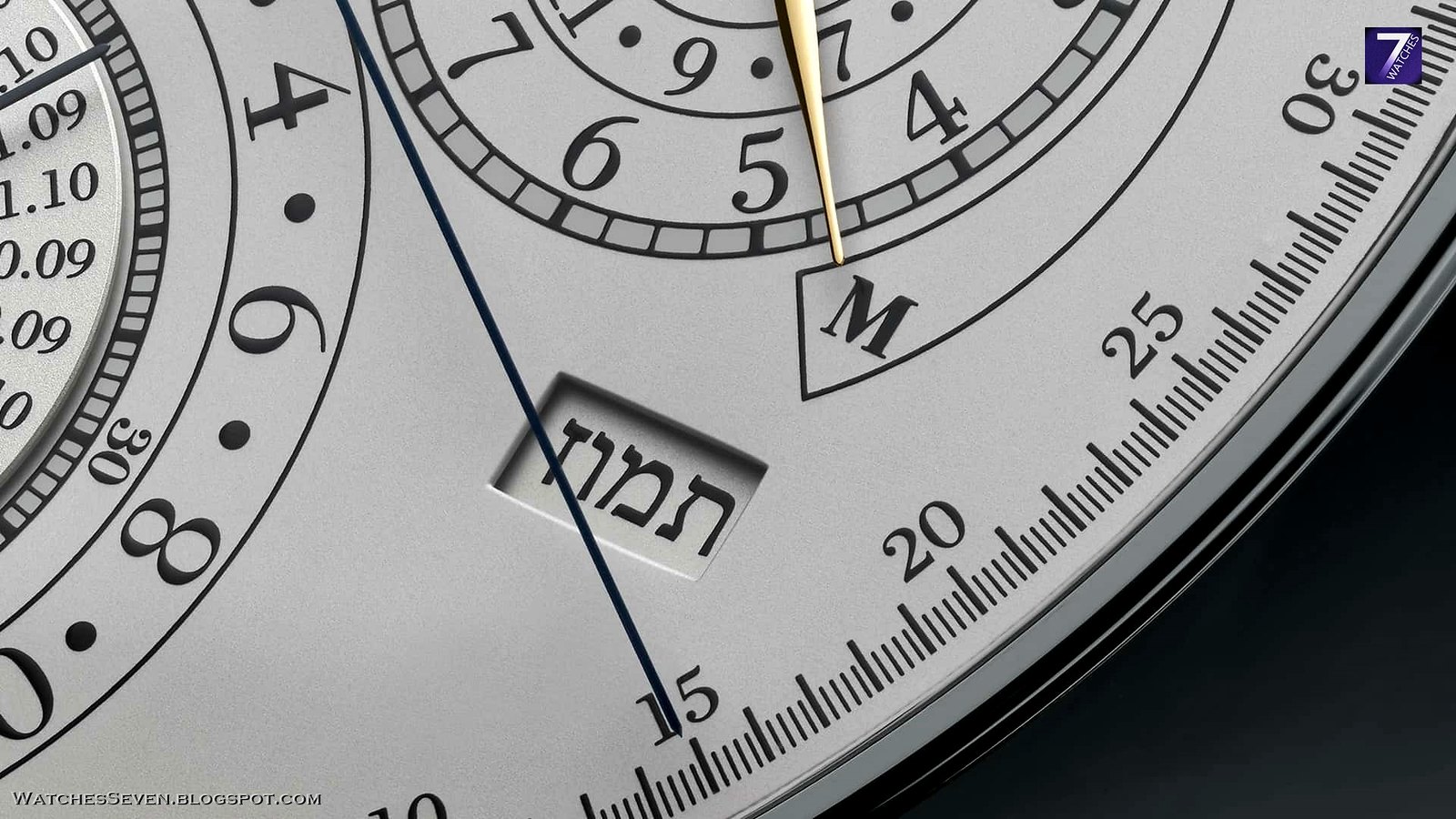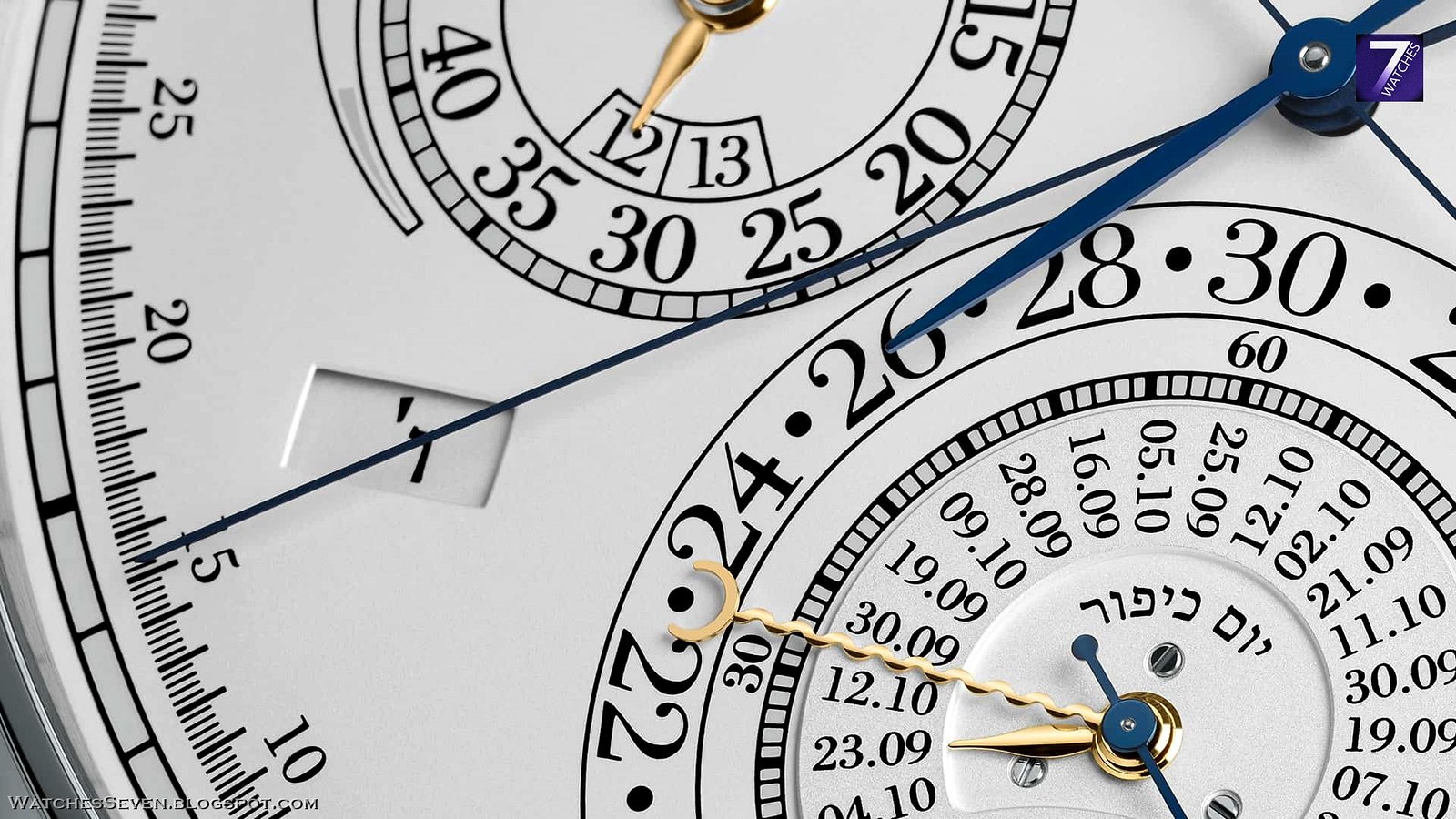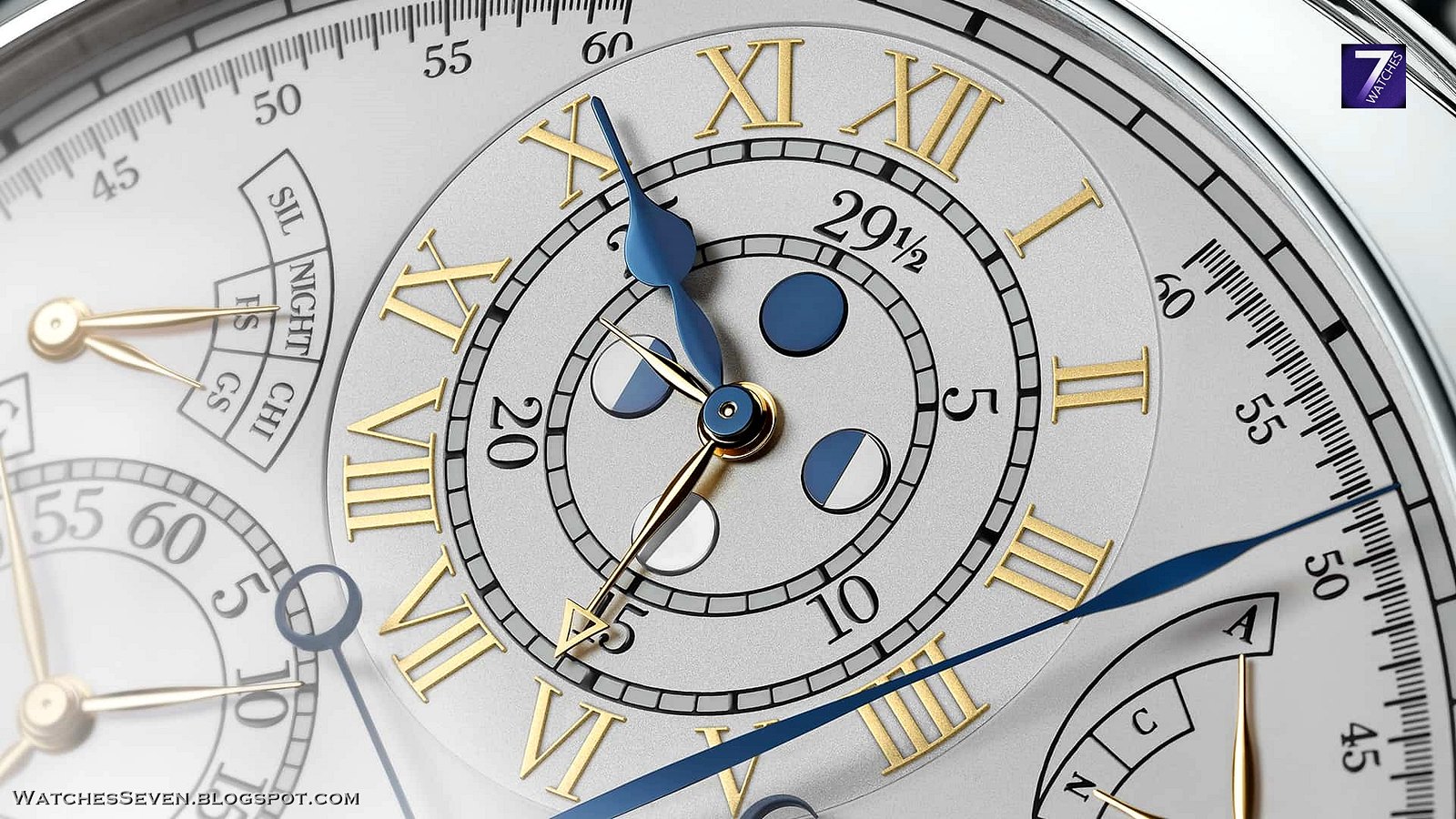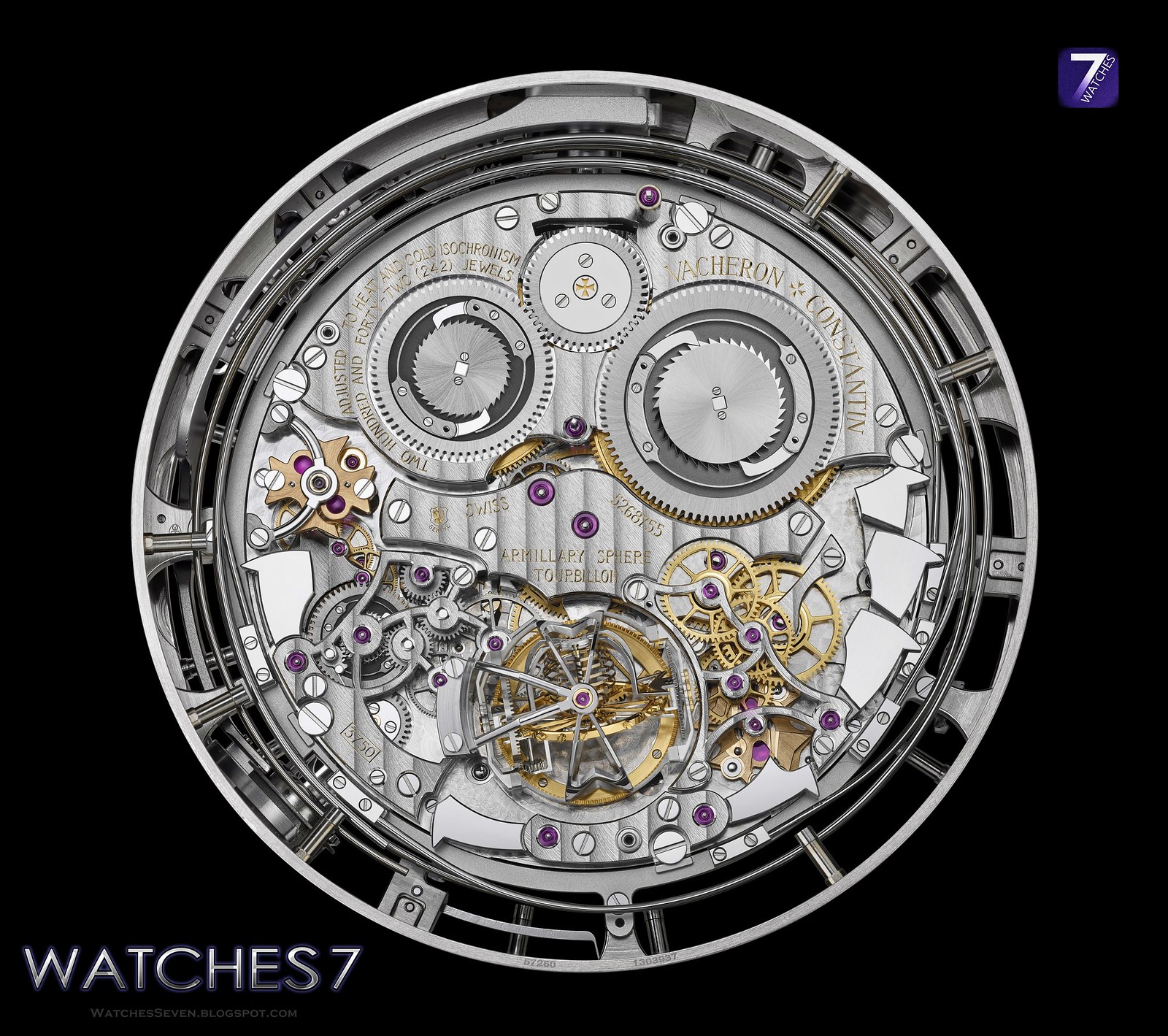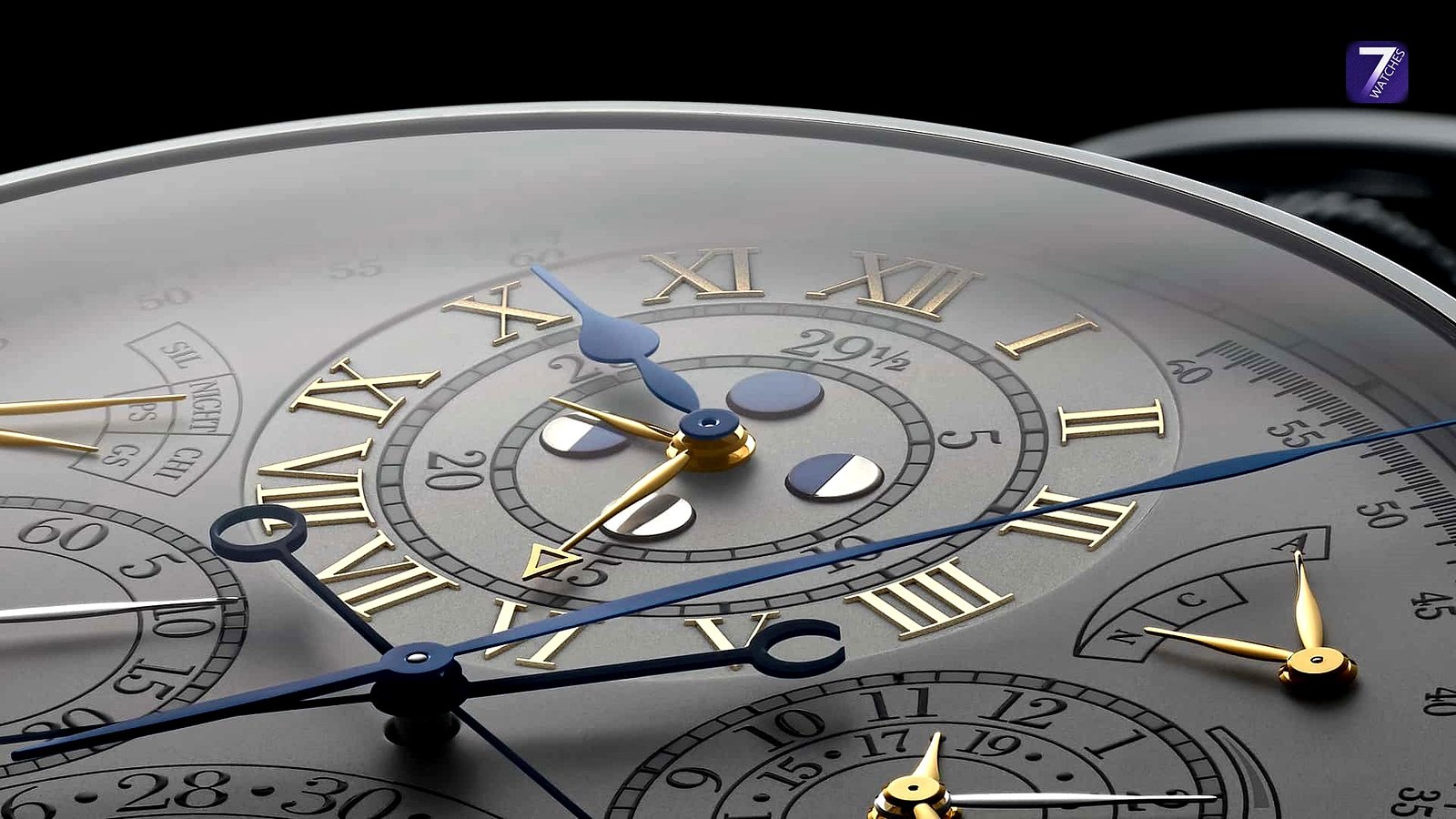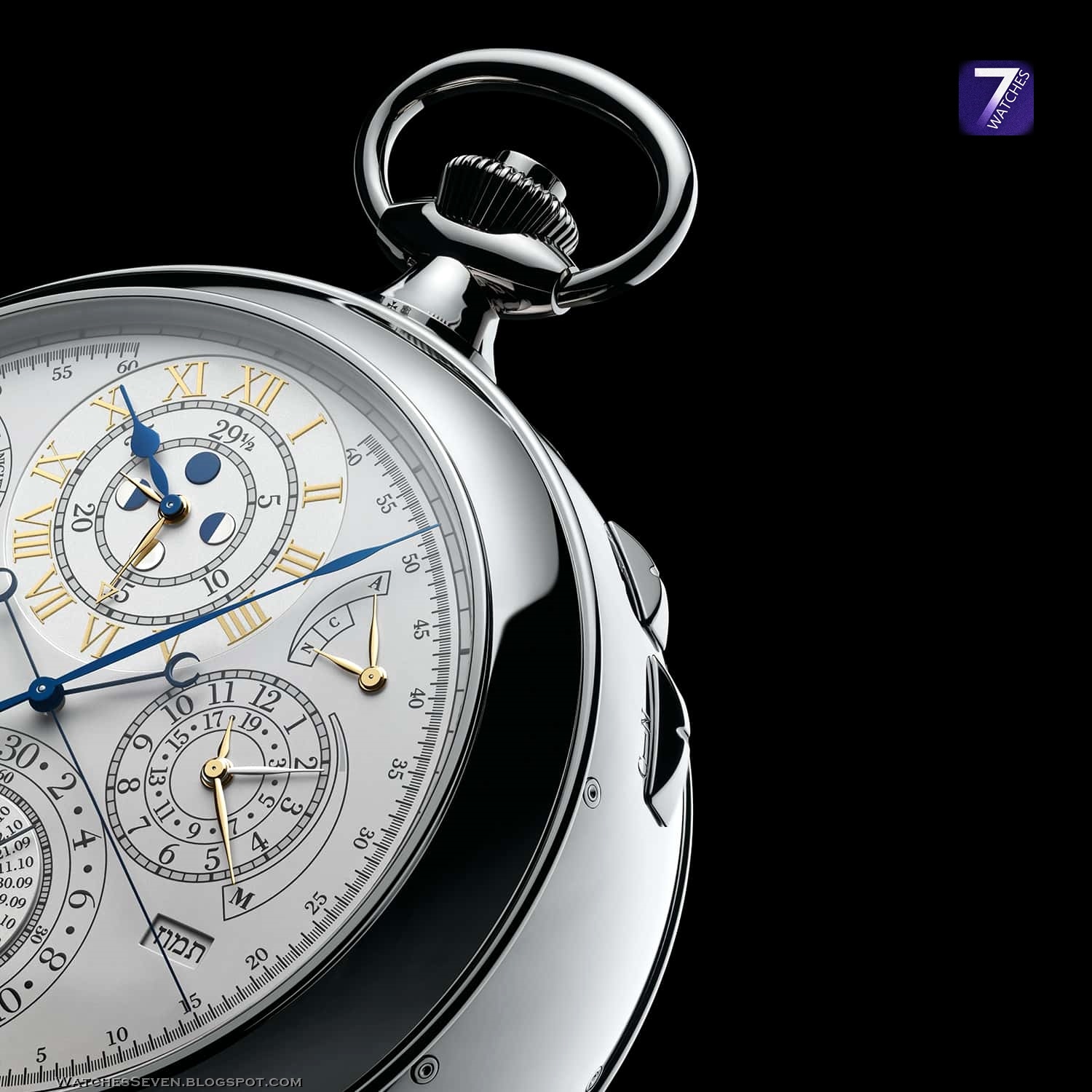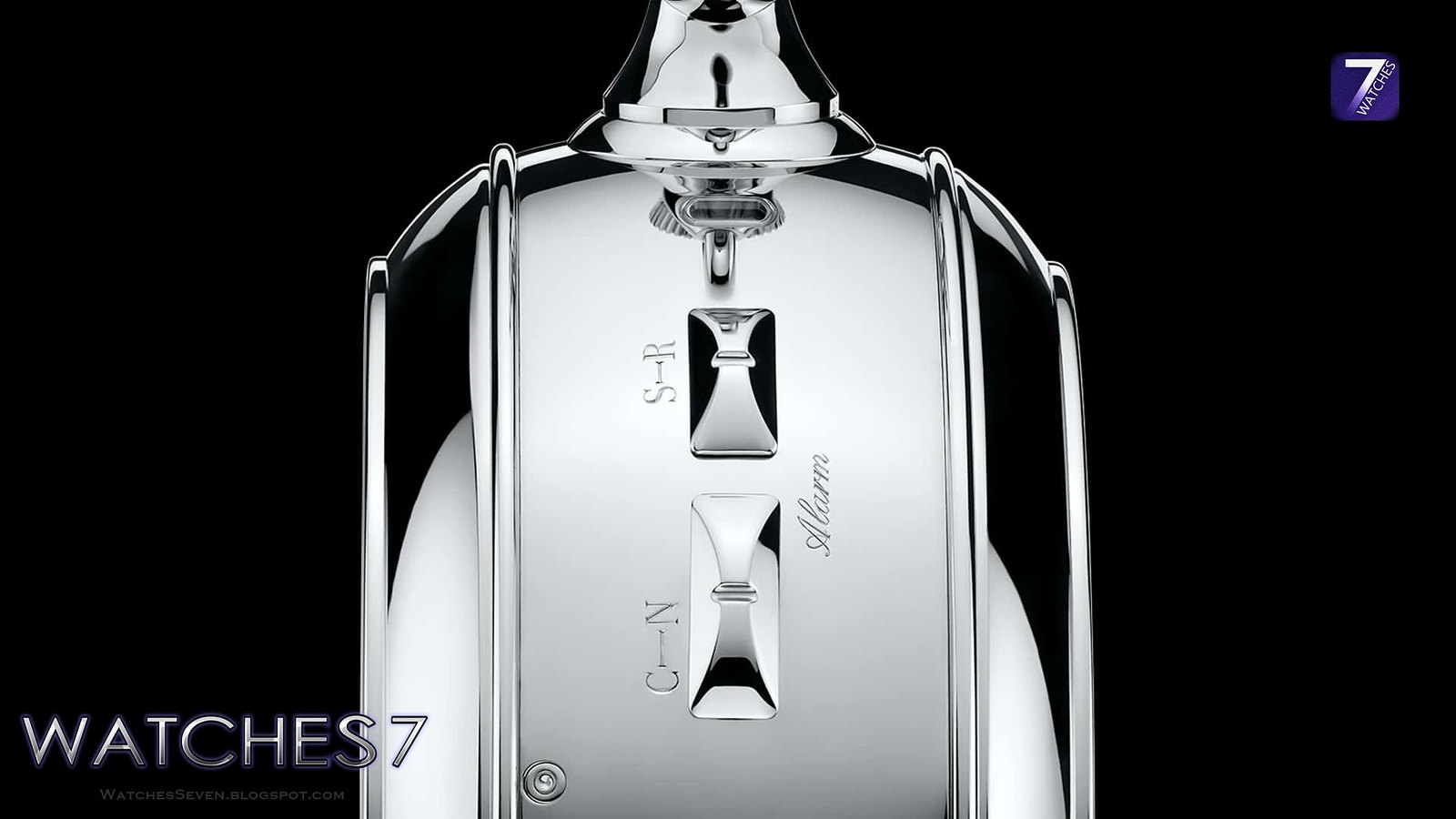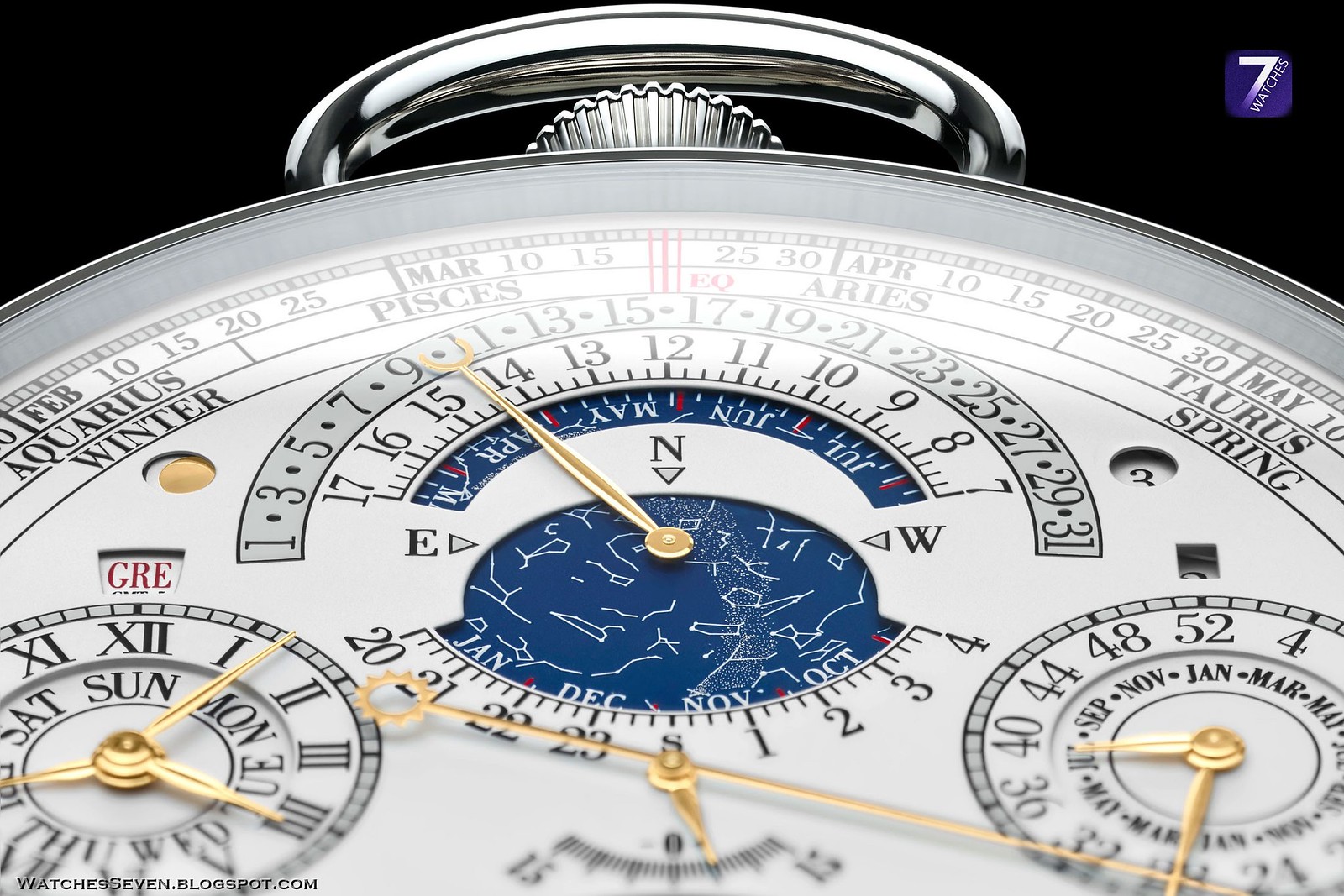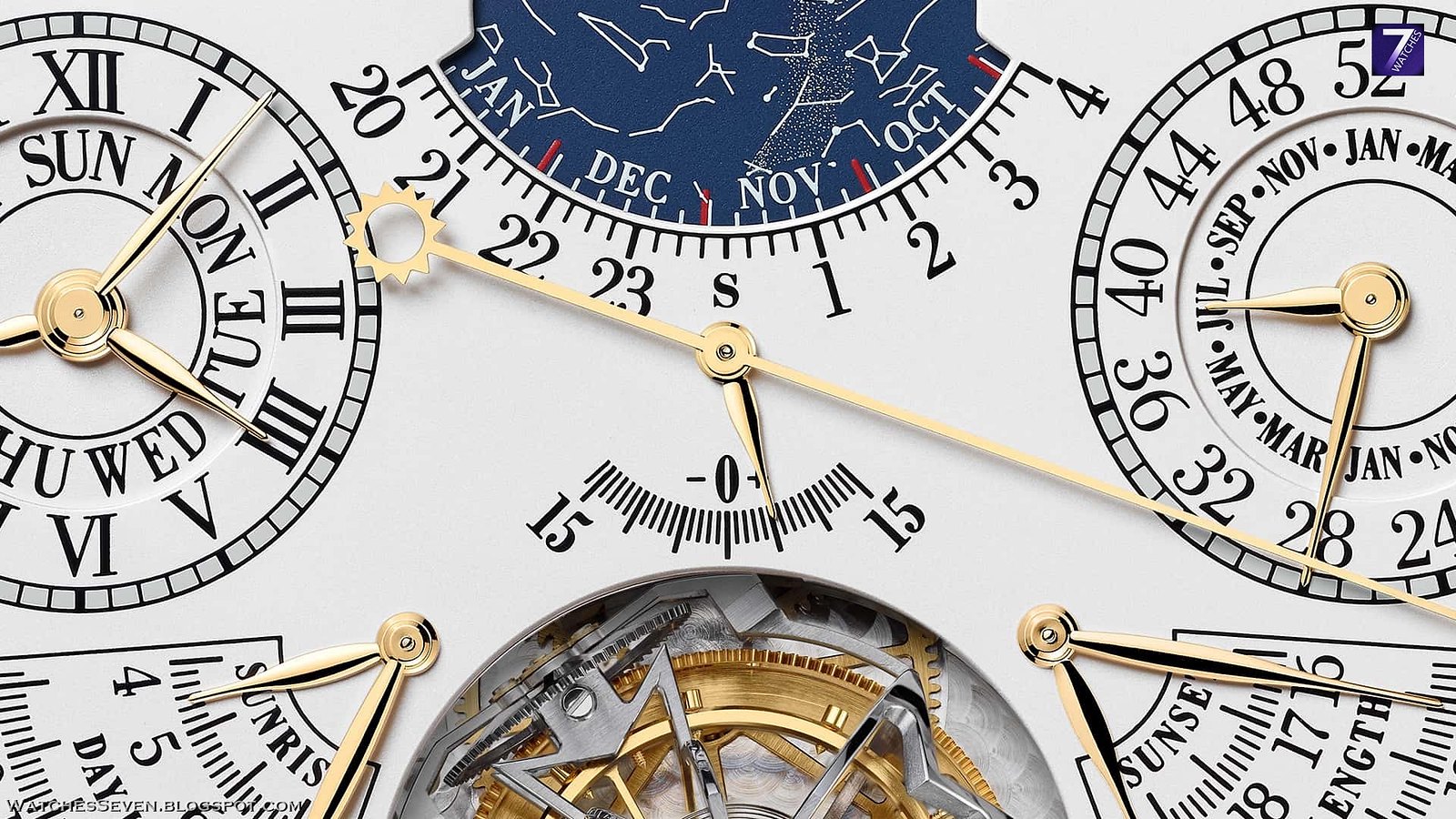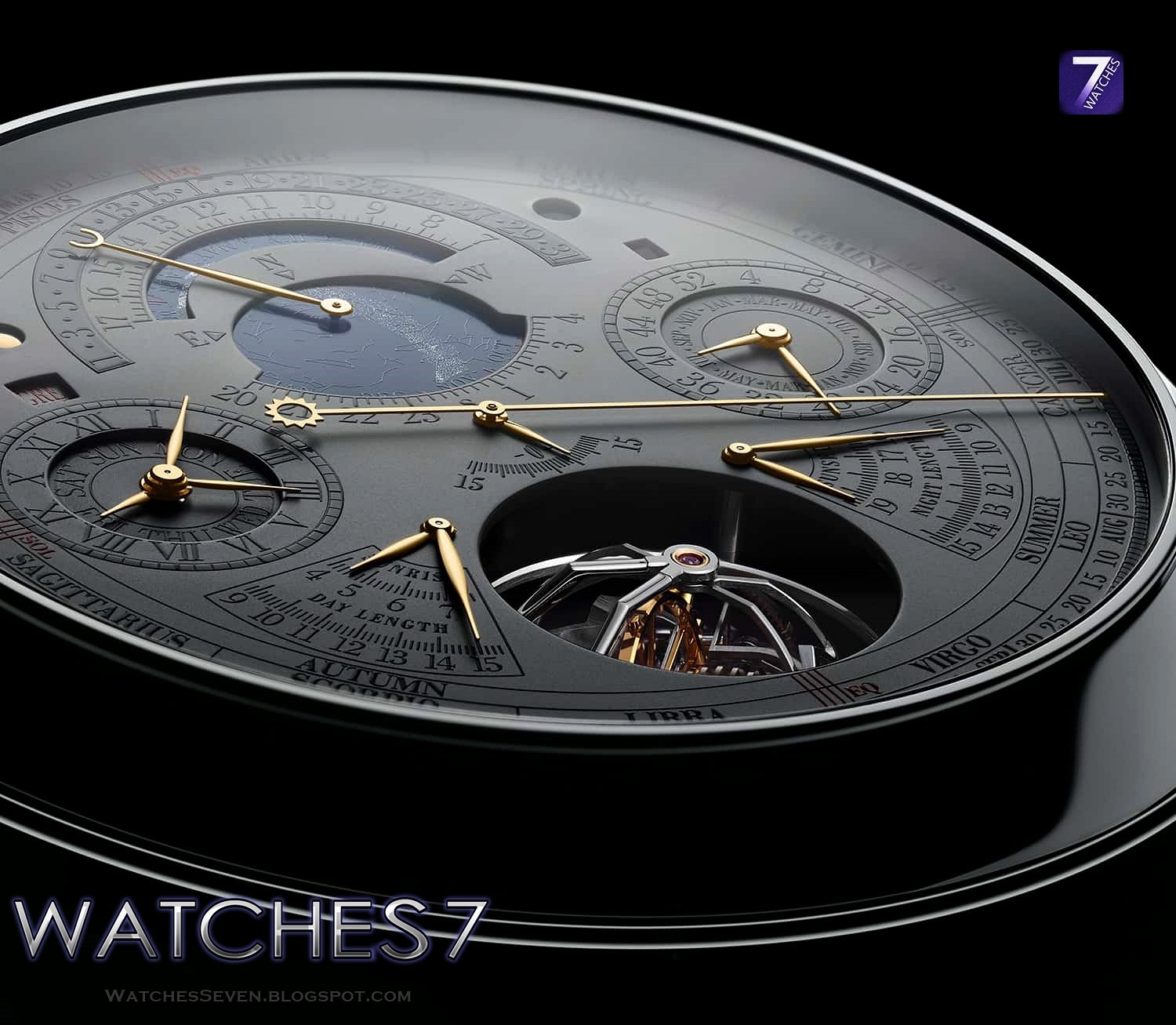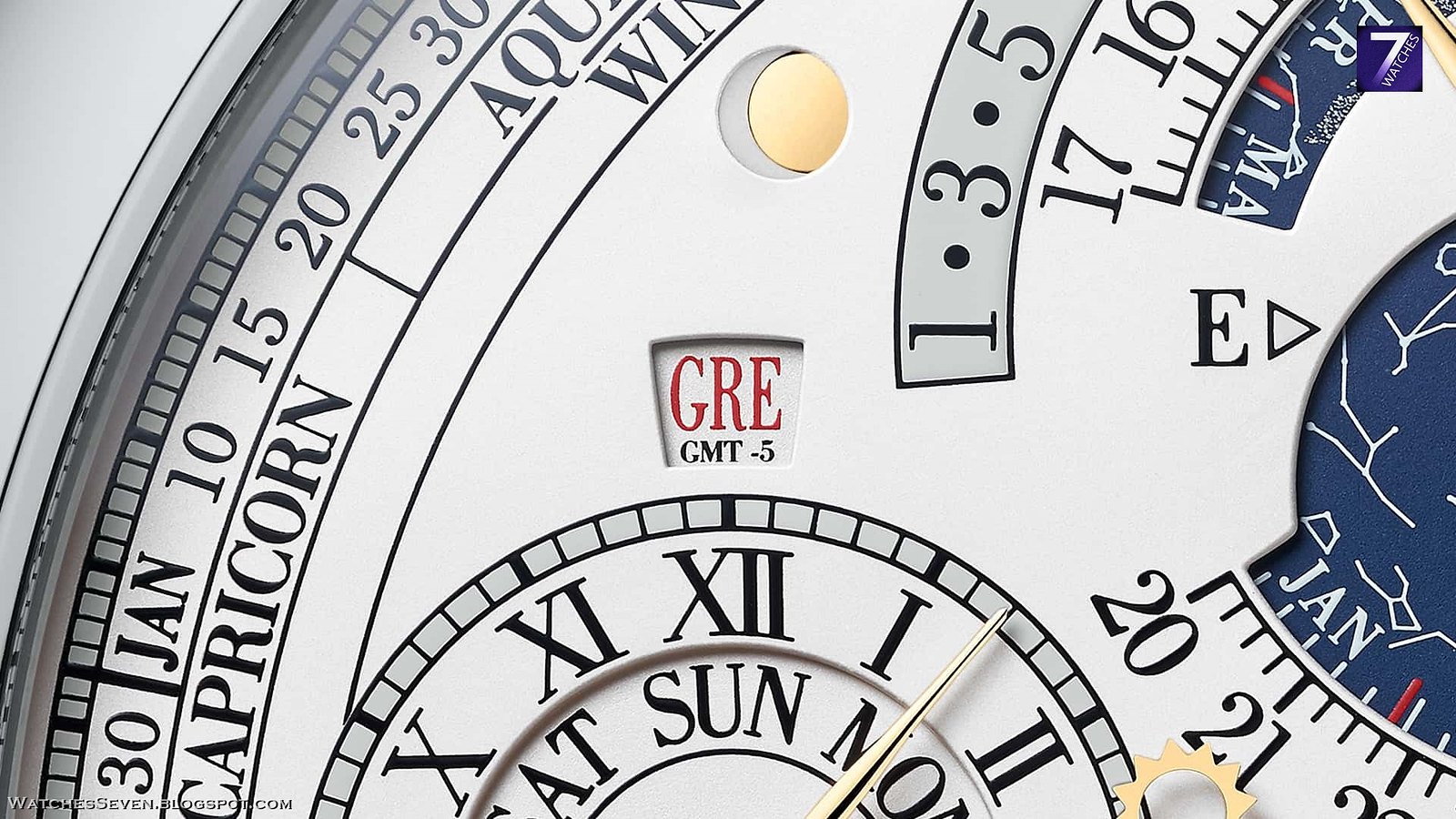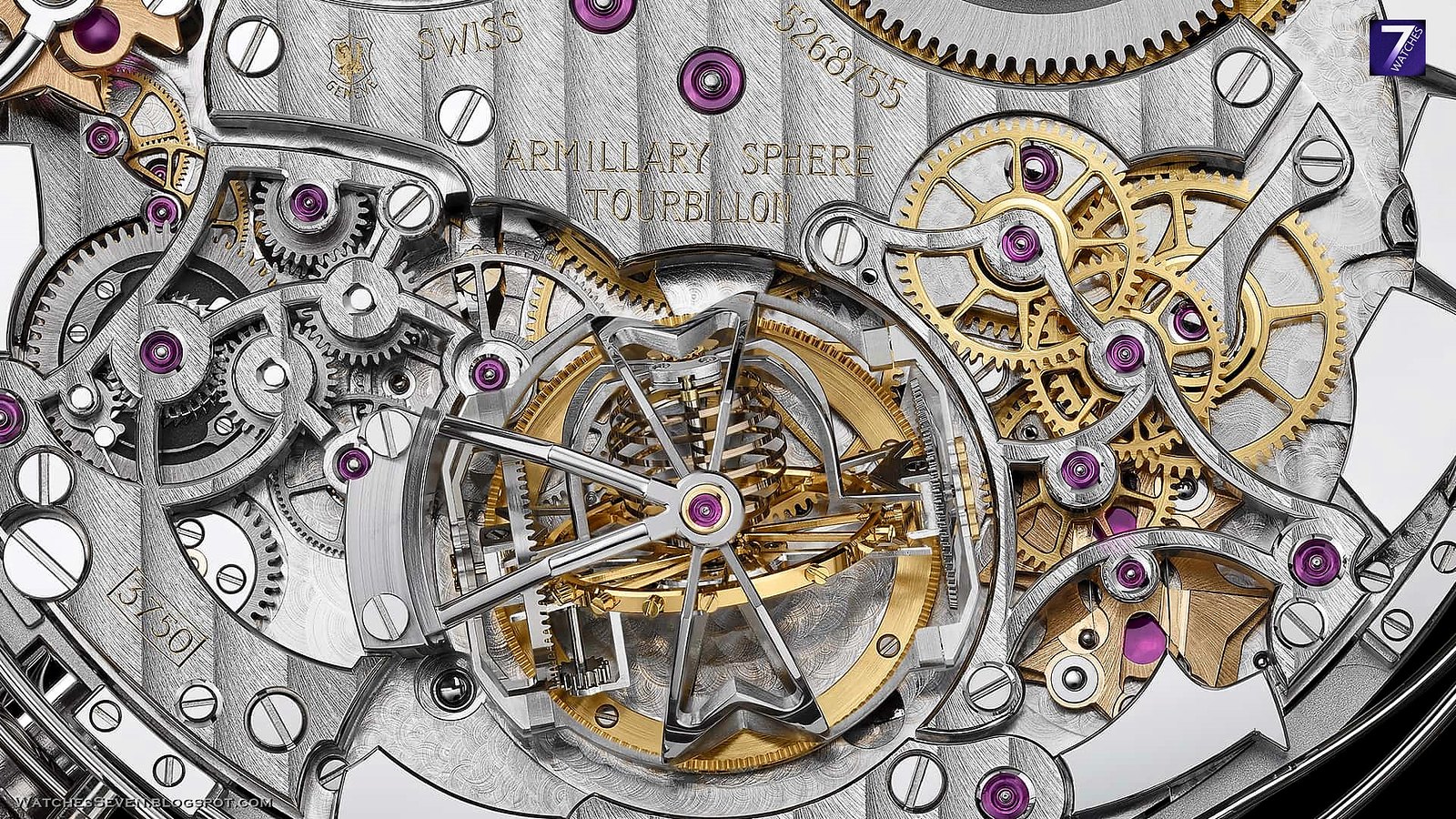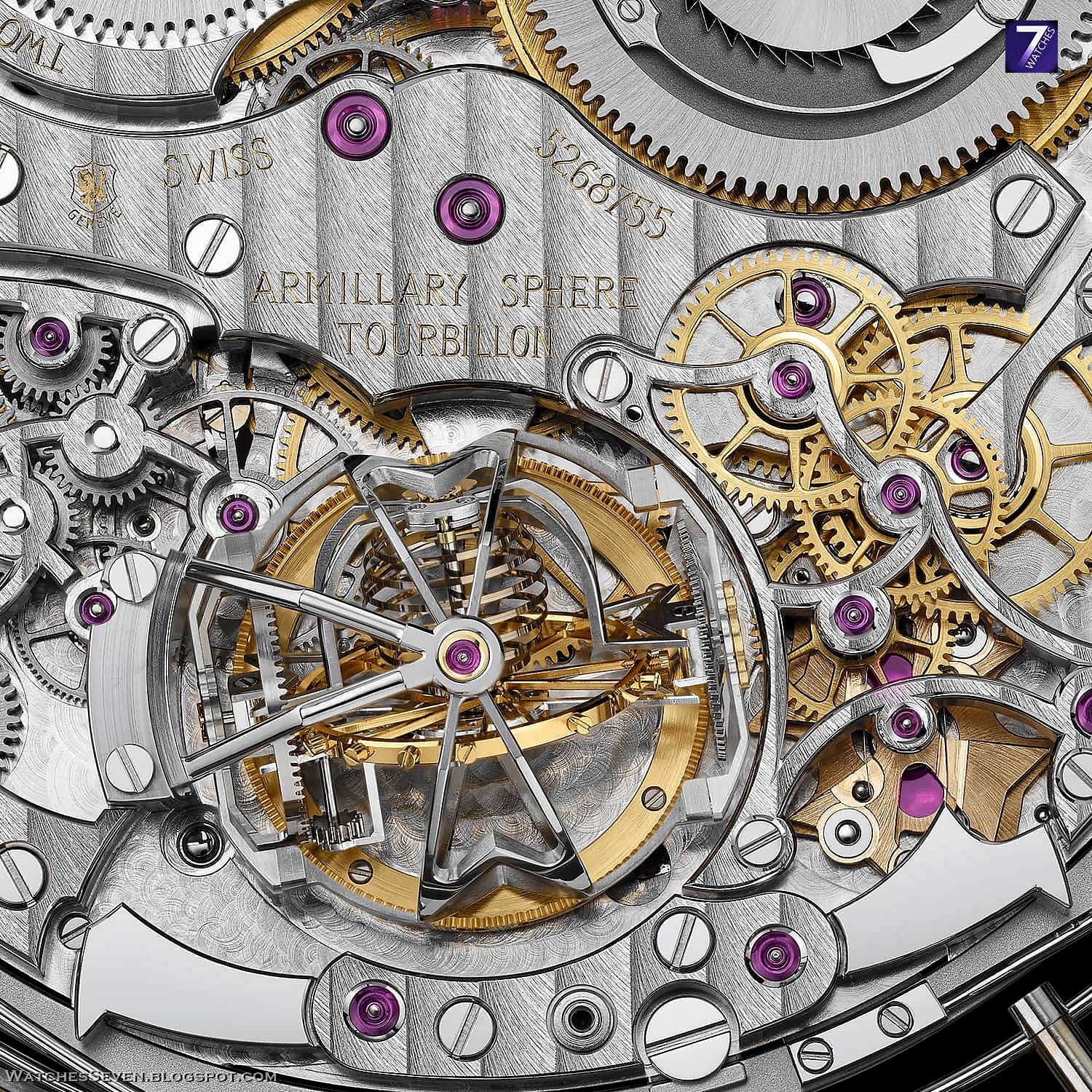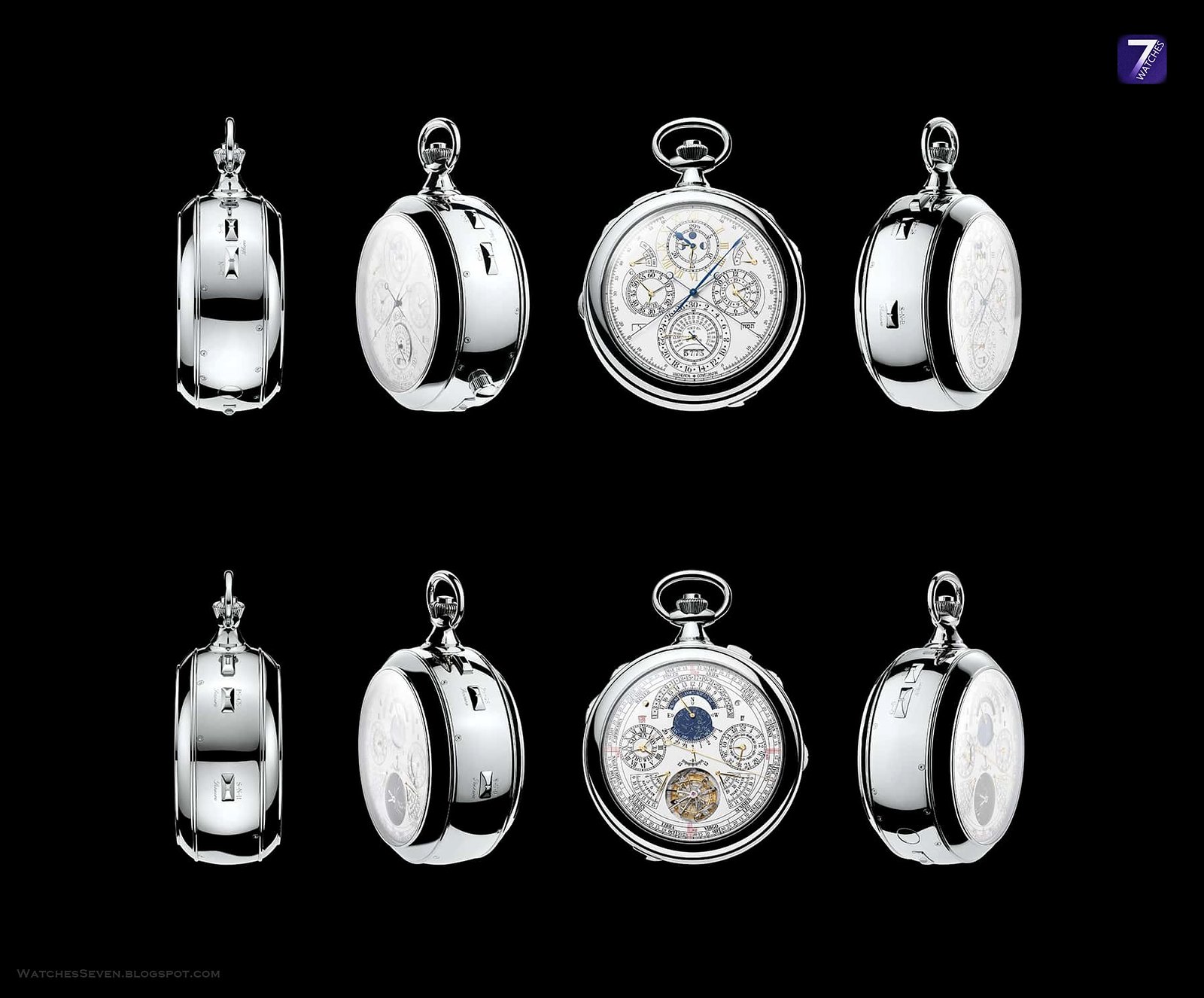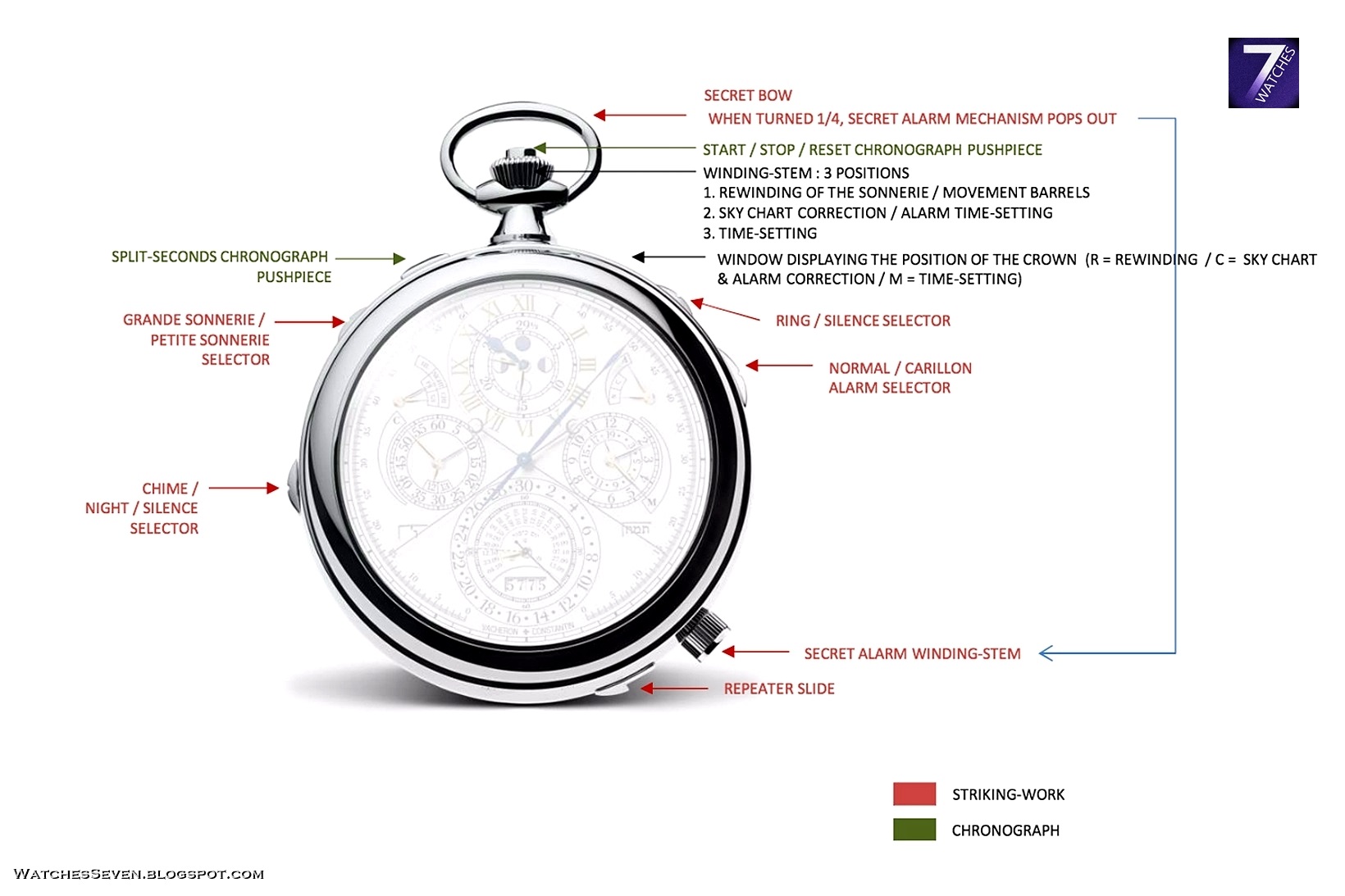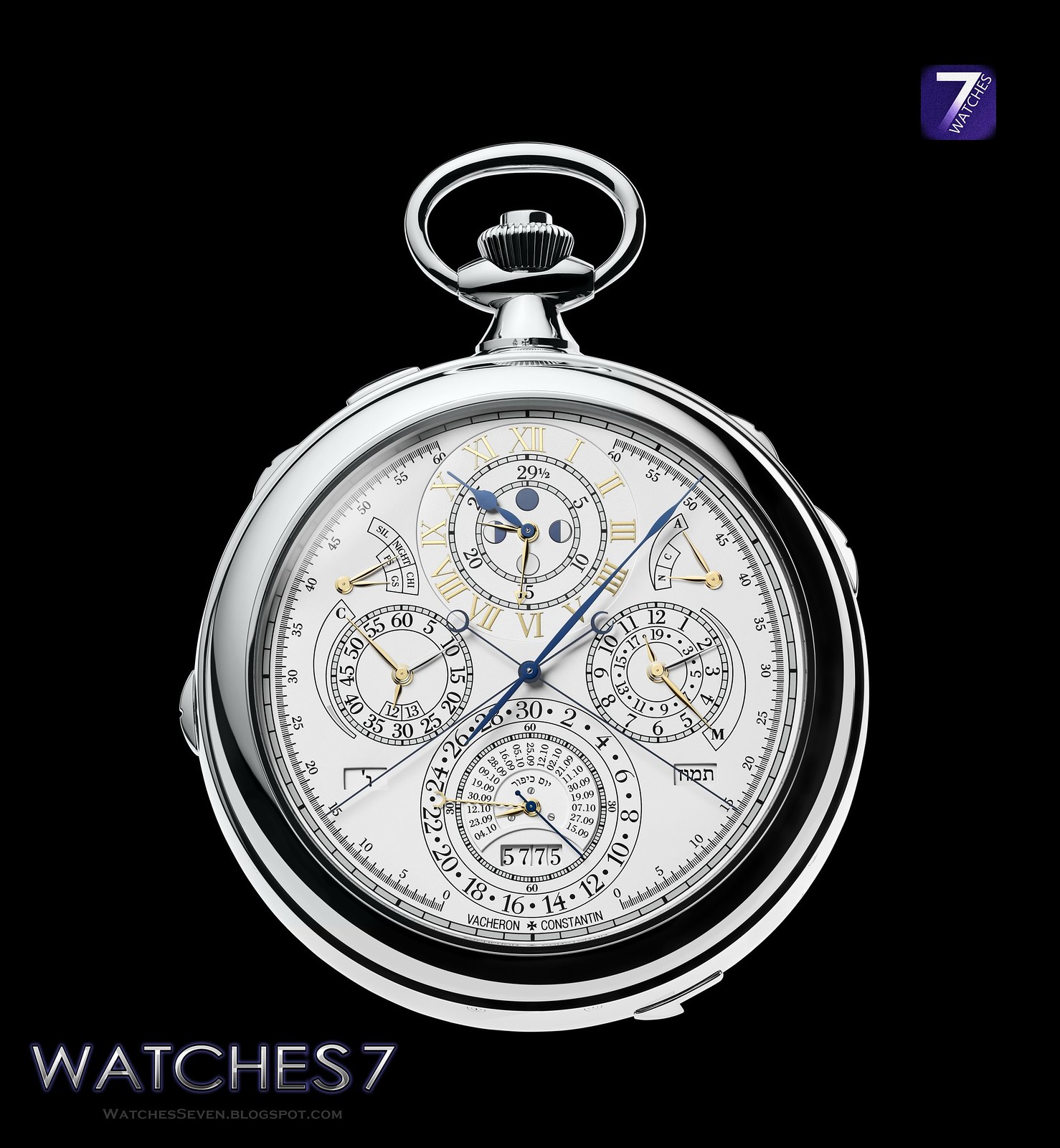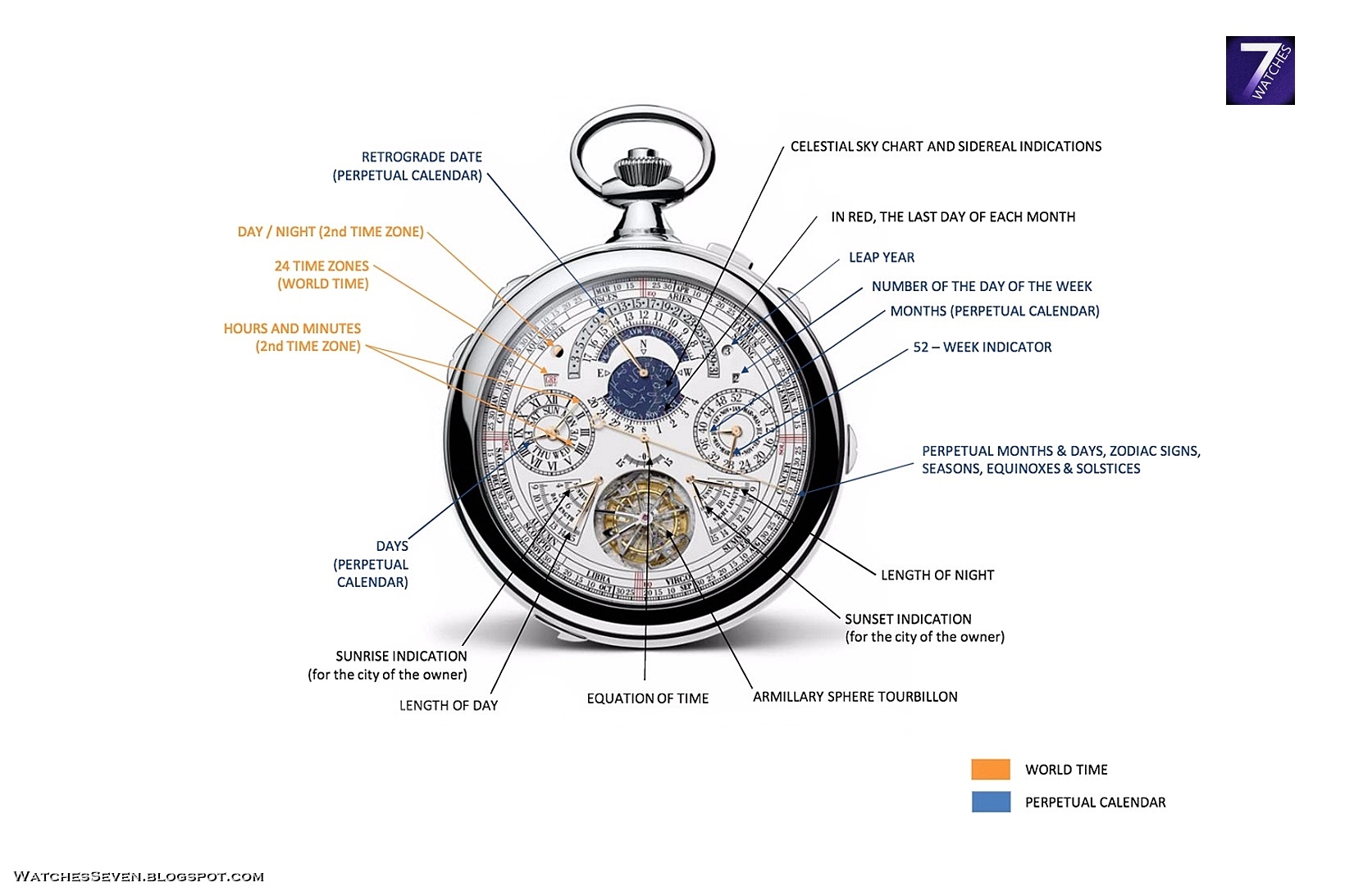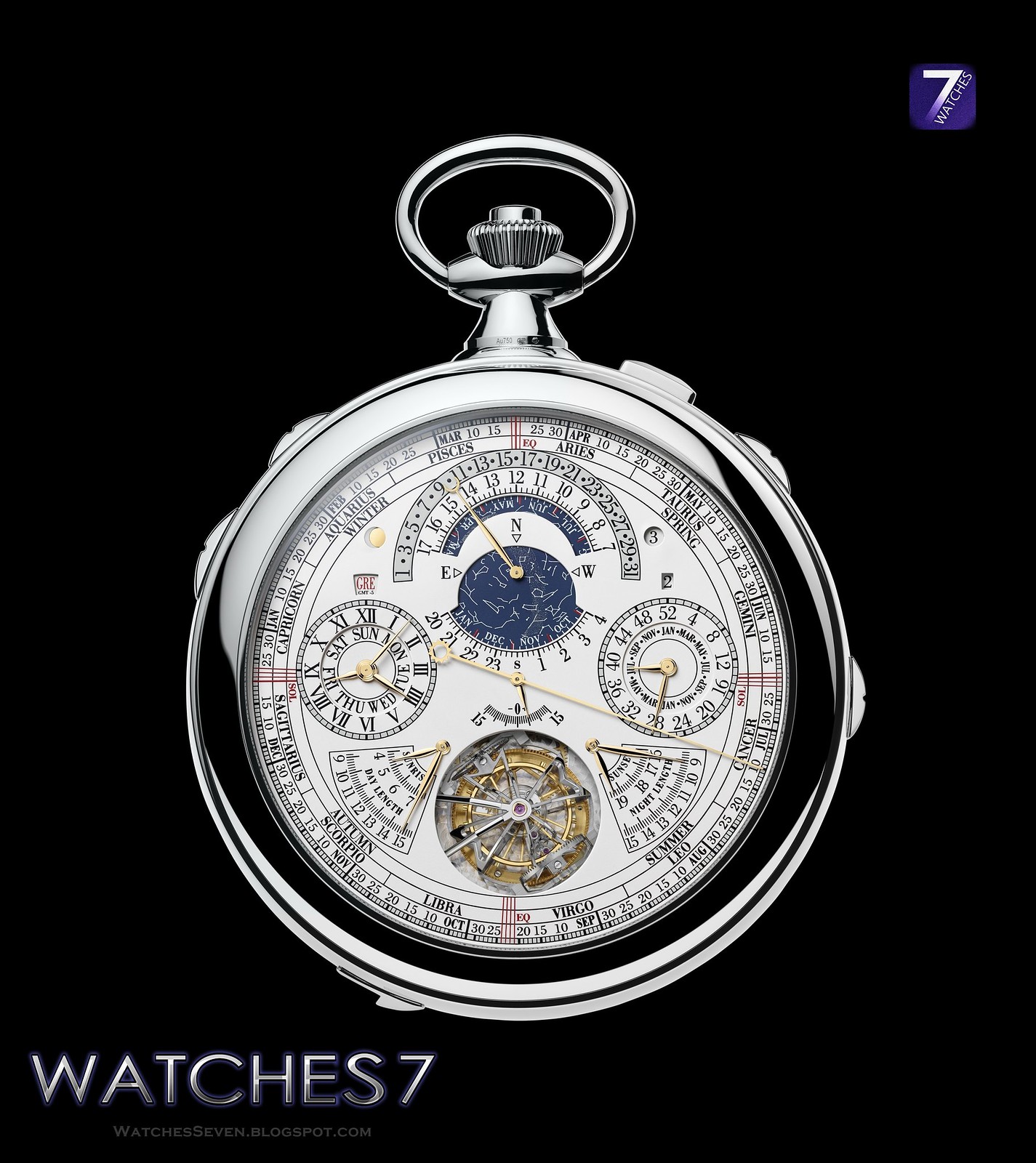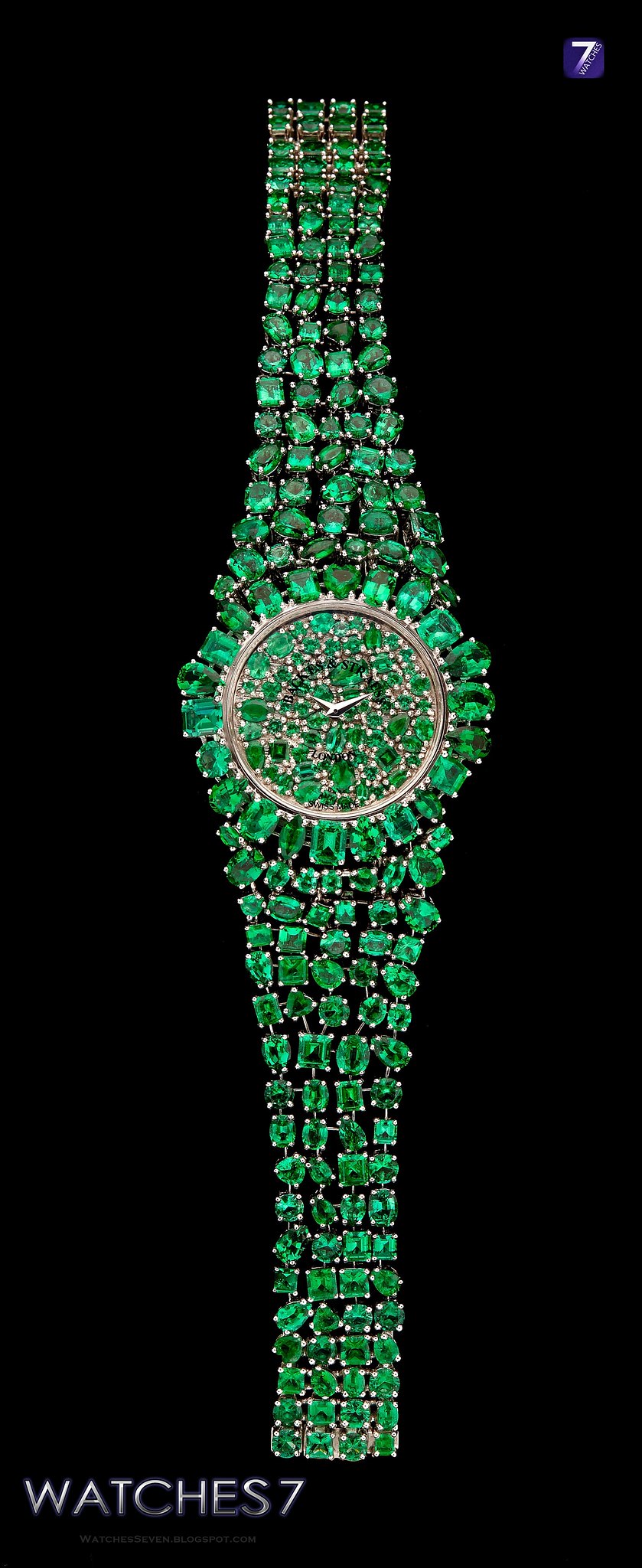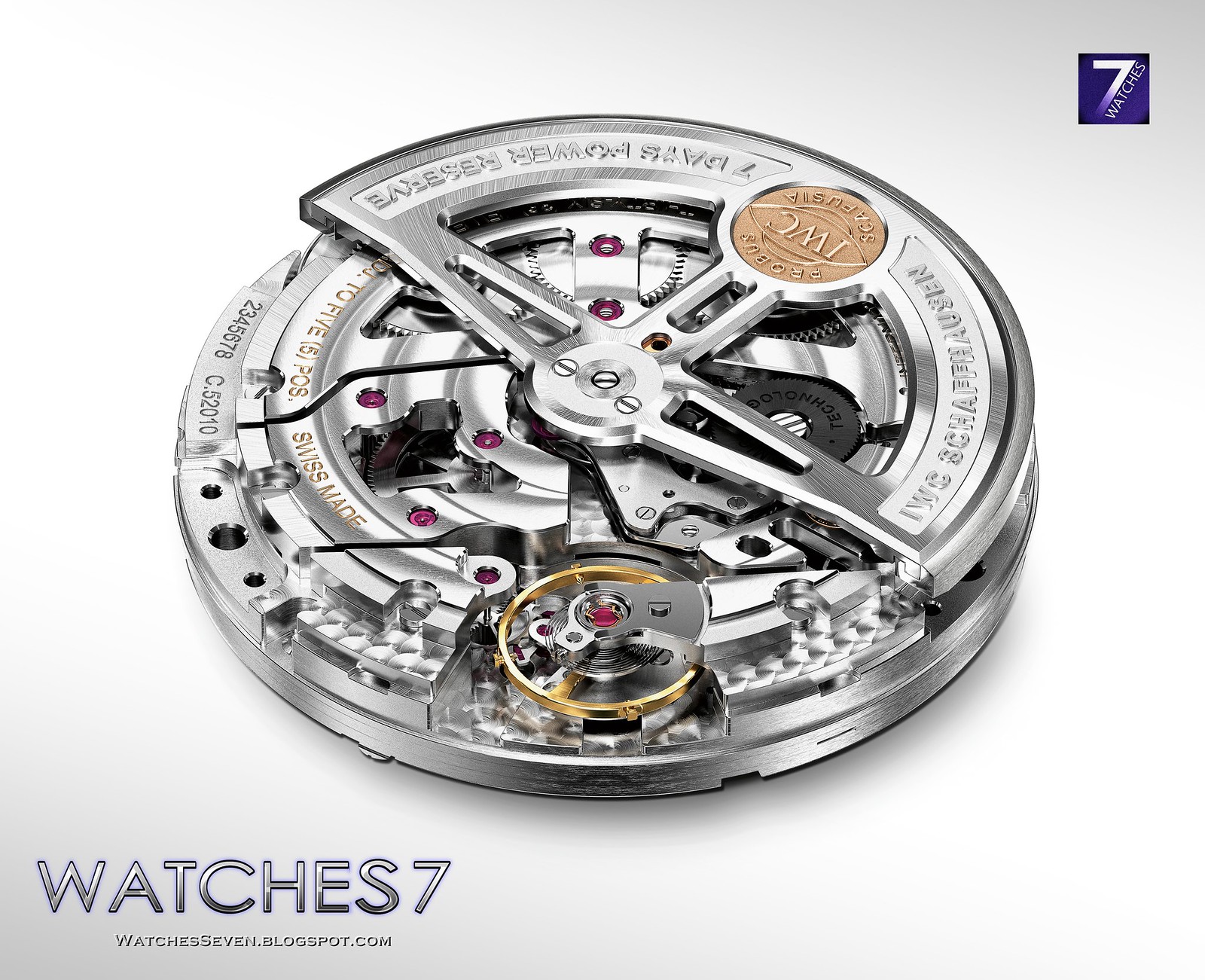VACHERON CONSTANTIN – ATELIER CABINOTIERS Reference 57260 White Gold - Unique 260th Anniversary timepiece NEW
PRESENTING THE VACHERON CONSTANTIN REF. 57260
THE MOST COMPLICATED WATCH EVER MADE IN THE HISTORY OF HOROLOGY
Click on the mouse wheel to see the large size .... BIG FOTO
Manufacture of eternity since 1755, Vacheron Constantin celebrates 260 years of uninterrupted history on September 17, 2015. As part of this landmark event, the Maison unveils a unique timepiece. This watch is a breakthrough technical feat for Fine Watchmaking. From an initial idea conceived by a major collector, this watch became a reality thanks to the determination of Vacheron Constantin to redefine the limits of possibility.
Click on the mouse wheel to see the large size .... BIG FOTO
September 17th, 2015 will be forever remembered in the history of horology as the most complicated watch ever created gets unveiled. In François Constantin's words: “ Do better if possible, and that is always possible”. The very essence of this motto drives Vacheron Constantin to cultivate special ties with the great patrons and exceptional men whose dreams have fired them to contributing to the advancement of art and of haute horlogerie over the past two centuries. To celebrate the 260th anniversary of Vacheron Constantin, the manufacture has created the most complicated timepiece ever made featuring 57 complications — three of them never seen in a watch before.
Click on the mouse wheel to see the large size .... BIG FOTO
The pocket watch ref. 57206 was developed and finished over the course of eight years by the hands of three master watchmakers. Below are some of the complications never before seen in a watch and that are included in the new Vacheron Constantin ref. 57260. Up to date the most complicated watches ever made were the Patek Philippe Calibre 89 with 33 complications, the Patek Philippe Star Calibre 2000 with 21 complications, the Patek Philippe Henry Graves Jr. Super complication and the Vacheron Constantin Tour de l'Ile with 16 complications.
The Hebraic Perpetual Calendar
Probably the most challenging of the 57 complications the Hebraic perpetual calendar requested highly complicated mathematical calculations combining both the lunar months and solar year were transcribed into not only an operational mechanism but a display that is elegant, logical and easy to read. The Hebraic perpetual calendar works on the principle of the 19-year Metonic cycle because 19 years it is almost exactly a multiple of the solar year and lunar month over that period.
Click on the mouse wheel to see the large size .... BIG FOTO
On this watch, the Metonic cycle (also called Golden Number) is displayed as a sector at 3 o’clock concentric with the chronograph hour register. The date of Yom Kippur indicated in the Gregorian calendar each year, is represented by the corresponding retrograde hand at 6 o'clock, which returns to its starting point every 19 years, at which time the sector is replaced for another for each of the 19 year cycles.
Click on the mouse wheel to see the large size .... BIG FOTO
To keep the 12-month lunar year in pace with the solar year, a “13th” leap-month called an intercalary month has to be added seven times during the 19-year cycle. Ingeniously, this watch not only allows for this addition but also shows the user whether the current year is a 12 or 13-month year via an indicator hand and 12/13 display situated concentric with the chronograph minute register and counter hand in the 9 o’clock position.
Click on the mouse wheel to see the large size .... BIG FOTO
In the Hebrew calendar, there are fixed lunar months of 29 or 30 days alternately. Those of Cheshvan and Kislev can have 29 or 30 days, depending on the year. Here, the self-correcting date hand is concentric to the Yom Kippur sector and constant seconds. On either side of the date, two windows indicate the number of days and months in Hebrew.
Click on the mouse wheel to see the large size .... BIG FOTO
The secular Hebrew calendar, which is displayed in a four-digit window below the Yom Kippur sector is calculated from the supposed date of the creation of the world in 3760 BC. To calculate the present year in the Hebrew calendar 2015 is added to 3760 giving the year 5775. The Jewish New Year begins again in September 2015 with therefore the Hebrew year 5776. Tishrei is the first month of the Hebrew calendar.
Click on the mouse wheel to see the large size .... BIG FOTO
Within the center of the hour chapter-ring are four representations of the moon phases and also a hand indicating the age of the moon within its 29.5305882 day cycle. The Vacheron Constantin moon phase system requires correction only once every 1027 years.
Click on the mouse wheel to see the large size .... BIG FOTO
Double Retrograde “Rattrapante” Chronograph
Completely new to the world of watchmaking, the retrograde rattrapante chronograph is of a totally innovative design and construction. This is the first watch ever to be made with a rattrapante chronograph with double retrograde action. It is not only a highly visual complication but mechanically ingenious.
Click on the mouse wheel to see the large size .... BIG FOTO
This new chronograph is read by the user exactly in the manner of a classic split-seconds chronograph; uniquely however, whilst both hands still work in unison and from the same axis, unlike all other split-seconds chronographs, the two hands never actually meet but operate on two separate scales on opposing sides of the dial. In this respect, the new chronograph can perhaps be best described as a “detached” split-seconds chronograph.
Click on the mouse wheel to see the large size .... BIG FOTO
In addition, it has been necessary to specially design and make the two long and very fine chronograph hands so that the chronograph has perfect stability and extreme accuracy during operation. There are two register dials for the chronograph counting each elapsed minute up to 60-minutes and each elapsed hour up to 12-hours so that events of up to 12-hours in duration can be accurately recorded.
Click on the mouse wheel to see the large size .... BIG FOTO
The Westminster Chiming, Alarm and Special Night-Silence Feature
Sectors can be seen on the dial to either side of the hour chapter ring, just above the chronograph registers. These sectors with their corresponding hands are indicators for the selection of the mode of chiming, mode of alarm striking and the alarm power-reserve indicator. These are unsurprisingly highly sophisticated and incorporate new and unique watchmaking inventions and innovations.
Chiming
This watch offers 3 possible striking modes:
1. Striking - the watch chimes automatically at each passing quarter hour, in the same way as a clock.
With five hammers striking five finely tuned steel gongs, the chiming sequence is that of "Big Ben", the clock of the Palace of Westminster in London.
Click on the mouse wheel to see the large size .... BIG FOTO
2. Night silence – chiming automatically disabled from 22h to 8h (described in more detail below).
3. Silence - chiming switched off when it is not desired.
Click on the mouse wheel to see the large size .... BIG FOTO
There are two additional options to choose from; Grande sonnerie - striking the hours and the quarters at every passing quarter and alternatively Petite sonnerie – striking the full hours at the hour but only a quarter-strike without hours on the quarters. To repeat the chiming at any time, the slide on the band of the case can be activated whenever it is desired by the user.
👉Link to the album
Night-Time Silence
A unique and very user-friendly new feature has been developed especially for the chiming system of this watch, that of the automatically activated “Night-Time Silence” mode. A special system has been developed by Vacheron Constantin and built into this watch whereby (in this instance) between the hours of 10pm at night and 8am in the morning it does not chime in order not to disturb its owner. This system is unique in being the first to be automatically activated without the need to manually set the chime or silence option.
Click on the mouse wheel to see the large size .... BIG FOTO
Alarm
In addition to the chiming mechanism, this model houses an integrally connected alarm system with separate power-reserve indication. The main feature of this Vacheron Constantin mechanism is that it allows a choice between either a traditional alarm on an additional differently tuned single gong with single hammer or Westminster carillon full chiming alarm in either Grande or Petite sonnerie mode.
Click on the mouse wheel to see the large size .... BIG FOTO
The alarm is set via the winding crown which moves an additional alarm hand co-axial with the hour and moon’s age hand. The flush-fit winding button is situated in the band of the case.
Click on the mouse wheel to see the large size .... BIG FOTO
The Second Dial and Further Functions
As well as the astronomical indications, several unique and major systems developed especially for this watch are presented here including a 12-hour second time-zone governed by a digital world-time display, a double perpetual calendar and a remarkable fully visible armillary sphere tourbillon.
Click on the mouse wheel to see the large size .... BIG FOTO
The blue star chart in the upper half of the dial represents the night sky and the star constellations visible from the user’s home city, with the months appearing around the edge. Concentric around the outer border is the scale for the retrograde date of the perpetual calendar, the hand “flying” back to its start point at the end of each month. Subsidiary dials for the days of the week and the months flank the star dial and the aperture above the month dial shows the number of the year between 1 and 4 in the leap-year cycle.
Click on the mouse wheel to see the large size .... BIG FOTO
Around the edge of the dial are three astronomic scales which are read using the central gold hand identified by its sun counterpoise. The outermost scale is for the months of the year and their respective number of days, while a concentric scale for the year divided into Zodiac sign periods additionally indicates the dates of the Vernal and Autumnal Equinoxes and the summer and winter solstices. The inter-related four seasons are displayed on a further inner concentric ring.
Click on the mouse wheel to see the large size .... BIG FOTO
The sector above the tourbillion aperture indicates Equation of Time showing the discrepancy between true solar time and standard meantime which fluctuates during the year but can be ahead by as much as 16 minutes (around November 3rd) and behind by 14 minutes (around February 12th). Solar and meantime are equal on just four occasions each year. Flanking the tourbillon aperture are two dual sectors for the time of sunrise and day length and time of sunset and night length in the user’s home city. These indications are in fact another relevant factor in the Gregorian calendar in which the days are calculated from the hours of light and darkness and not strictly set times.
Click on the mouse wheel to see the large size .... BIG FOTO
Another watchmaking first is the 12-hour second time zone dial with separate day and night indicator window located in the 10 o’clock position: the second time zone is used in conjunction with the digitally displayed world-time function which gives a choice of 24 cities and countries and their respective time deviations from Greenwich Meantime.
Click on the mouse wheel to see the large size .... BIG FOTO
This thoroughly new and discreet 12-hour system of world-time mechanism and display is the first new system to be developed since Louis Cottier’s well-known world-time system with 24-hour indication invented about 1935 and is therefore of major significance.
The Dual-Function Perpetual Calendar
The perpetual calendar systems invented and built by the watchmakers of Vacheron Constantin are amongst the greatest achievements made during the construction of this watch. They represent Vacheron Constantin’s supreme mastery of both highly complex mathematical calculations and the ability of their watchmaking team to translate the calculations into mechanisms functioning in complete harmony in relation to the myriad other functions. Including the Hebraic perpetual calendar seen on the other dial, this watch has the ability to provide three entirely different perpetual calendar readings.
Click on the mouse wheel to see the large size .... BIG FOTO
The fundamental new departure is that two possible options are available for the reading of the Gregorian perpetual calendar displayed on this dial: either the traditional Gregorian calendar or the business calendar system known as ISO 8601, a numerical system which utilises 52 weeks and 7 days.
The Gregorian perpetual calendar which automatically corrects itself for the appropriate number of days in the month and the leap-years can be read on the dial using the retrograde date, the days of the week and months dials, with the leap-year window displaying a number between 1 and 4 located to the right of the retrograde date sector.
Click on the mouse wheel to see the large size .... BIG FOTO
The ISO 8601 business calendar is a specific system founded by the International Organization for Standardization and used mainly in the international financial sector – for example in company accounting for tax years, payment of wages or rents due on a weekly basis, the planning of projects in weekly cycles, etc. The purpose of this standard is to provide an unambiguous method of representing dates and times, so as to avoid misinterpretation of numeric representations of dates and times, particularly when data are transferred between countries with different conventions for writing numeric dates and times. When times are also required under the ISO system, they are given using the 24-hour system and with time-zone information where necessary. Both these functions are also present on this dial.
When the ISO 8601 mode is employed, the number of the week within the year and the number of the day within the week takes precedence over the traditional calendar month and traditional date, the number of the week is read from the dial concentric to the month indication and the number of the day within the week is indicated by a number between 1 (for Monday) and 7 (for Sunday) in a window directly above the week dial.
Click on the mouse wheel to see the large size .... BIG FOTO
The ISO system has a full cycle of 400 years and employs a seven-day cycle with weeks starting on a Monday. However, an ISO year can have either 52 or in some cases 53 full weeks when New Year’s Day falls on a Thursday (Wednesday or Thursday in leap-years): this occurs every 5 or 6 years.
Click on the mouse wheel to see the large size .... BIG FOTO
In the ISO system, week 1 is the one which contains the first Thursday of the year and always contains January 4th. The last week of the year in the ISO calendar is the one that contains the last Thursday and always includes December 28th. This system requires the user to adopt a different way of interpretation, for example: if the calendar is displaying Thursday, September 17th, the ISO calendar will read as day 4 in the day aperture (because Thursday is the fourth day) and W 38 (W for week) on the week dial.
Click on the mouse wheel to see the large size .... BIG FOTO
Another option in the mechanism of this ingenious system is that it can be switched from ISO mode to traditional calendar year mode. A calendar year is the period beginning January 1 and ending on December 31. Its programming mode will therefore also on 1 January of the year put the number of days of the week in synchronization with the first day of the calendar year. If the annual calendar displays the first day of the year on Thursday, January 1, the calendar will display W1 on the week dial and 1 in the day window (Thursday is the first day of the year).
The Vacheron Constantin Armillary Sphere Tourbillon
The mesmerizing Armillary tourbillon cage containing the watch’s escapement is visible through the aperture beneath the sky chart. It is both technically exciting and visually dramatic.
Click on the mouse wheel to see the large size .... BIG FOTO
The watchmakers at Vacheron Constantin have created the most supremely elegant mechanism that displays a three-dimensional constantly rotating sphere moving with the utmost delicacy simultaneously in three directions. Appropriately, the watchmaker has also chosen to use a spherical balance spring which not only adds to the elegance of the mechanism, its special properties contribute to the accuracy of the watch.
Click on the mouse wheel to see the large size .... BIG FOTO
👉 Link to the album
This tourbillon was named "armillary" because visually it is reminiscent of the circles and rings of the scientific instrument known as the armillary sphere. It was placed in the second dial side complementing the astronomical functions to suggest the apparent movement of the stars, the Sun and the ecliptic around the earth. The frame of the cage itself, made of ultra-light aluminum and carrying the escapement and balance, is ingeniously constructed to incorporate the Vacheron Constantin company symbol of the Maltese Cross, once every 15-seconds during the tourbillon’s rotation, the Maltese Cross becomes fully visible to the viewer.
Click on the mouse wheel to see the large size .... BIG FOTO
The armillary sphere tourbillon is a feat of high-precision watchmaking. Made of the lightest of materials, its purpose is to minimize the effects of gravity on the balance wheel, hairspring and pallet fork of the escapement. The tourbillon is essentially a revolving platform and “cage” upon which the whole escapement is mounted that makes one full rotation in one minute. In this tourbillon, the escapement is rotated in three planes at once. The escapement has two further exceptional features: a spherical balance spring and diamond anchor pallets.
Click on the mouse wheel to see the large size .... BIG FOTO
Full List of All 57 Complications
1. Regulator-type hours, minutes and seconds for solar meantime
2. Visible spherical armillary tourbillon regulator with spherical balance spring
3. Armillary sphere tourbillon
4. 12-hour second time zone hours and minutes
5. Indication for 24 world cities for world-time
6. Day and night indication for the 12-hour world-time
Perpetual Calendar Functions
7. Gregorian perpetual calendar
8. Gregorian days of the week
9. Gregorian months
10. Gregorian retrograde date
11. Leap-year indication and four year cycle
12. Number of the day of the week (ISO 8601 calendar)
13. Indication for the number of the week within the year (ISO 8601 calendar)
Click on the mouse wheel to see the large size .... BIG FOTO
Click on the mouse wheel to see the large size .... BIG FOTO
Hebraic Perpetual Calendar Functions
14. Hebraic perpetual calendar with 19-year cycle
15. Hebrew name of the day
16. Hebrew name of the month
17. Hebrew date indication
18. Hebrew secular calendar
19. Hebrew century, decade and year
20. Indication for the number of months in the Hebraic calendar year(12 or 13 months)
21. Indication for the Golden Number with 19-year cycle
Functions of the Astronomic Calendar
22. Indications for the seasons, equinoxes, solstices and signs of the zodiac with “sun” hand
23. The sky chart (calibrated for the city of the owner)
24. Sidereal time hours
25. Sidereal time minutes
26. Hours of sunrise (calibrated for the city of the owner)
27. Hours of sunset (calibrated for the city of the owner)
28. Equation of time
29. Length of the day (calibrated for the city of the owner)
30. Length of the night (calibrated for the city of the owner)
Click on the mouse wheel to see the large size .... BIG FOTO
Lunar Calendar Function
31. Phases and age of the moon, one correction every 1027 years
Religious Calendar Function
32. Indication for the date of Yom Kippur
Functions of the 3 column-wheel Chronograph
33. Retrograde fifths of a second chronograph (1 column wheel)
34. Retrograde fifths of a second rattrapante chronograph (1 column wheel)
35. 12-hour counter (1 column wheel)
36. 60-minute counter
Alarm Functions
37. Progressive alarm with single gong and hammer striking
38. Alarm strike / silence indicator
39. Choice of normal alarm or carillon striking alarm indicator
40. Alarm mechanism coupled to the carillon striking mechanism
41. Alarm striking with choice of grande or petite sonnerie
42. Alarm power-reserve indication
Westminster Carillon Striking Functions
43. Carillon Westminster chiming with 5 gongs and 5 hammers
44. Grande sonnerie passing strike
45. Petite sonnerie passing strike
46. Minute repeating
47. Night silence feature (between 22.00 and 08.00 hours – hours chosen by the client)
48. System to disengage the striking barrel when fully wound
49. Indication for grande or petite sonnerie modes
50. Indication for silence / striking / night modes
Further functions
51. Power-reserve indication for the going train
52. Power-reserve indication for the striking train
53. Winding crown position indicator
54. Locking mechanism for the striking
55. Winding system for the double barrels
56. Hand-setting system with two positions and two directions
57. Concealed flush-fit winding crown for the alarm mechanism
Click on the mouse wheel to see the large size .... BIG FOTO
Click on the mouse wheel to see the large size .... BIG FOTO
-----------------------------------------------------
Technical Specifications
ATELIER CABINOTIERS Reference 57260 White Gold
----------------------------------------
👉 Link to photo album ► BIG FOTO
Reference: 57260/000G-B046
Hallmark of Geneva certified timepiece
Movement
Caliber 3750
Developed and manufactured by Vacheron Constantin
Mechanical, manual-winding
Diameter: 72 mm (31"'1/2)
Thickness: 36 mm
Number of components: Over 2,800
Number of jewels: 242
Frequency: 2.5Hz / 18,000 vibrations per hour
Power Reserve: 60 hours
Number of complications: 57
More than 2'800 components
242 jewels
Calibre plates
Plate 150: Chronograph
Plate 250: Gregorian perpetual calendar
Plate 350: Chronograph & Hebraic perpetual calendar
Plate 550: Astronomic calendar
Indications
Time functions (6)
Perpetual calendar functions: Gregorian and Hebraic (15)
Astronomic calendar functions (9)
Lunar calendar function ( 1)
Religious calendar function ( 1)
Chronograph (3 column-wheels) functions (4)
Alarm functions (6)
Westminster Carillon striking functions (8)
Further functions (7)
Case
Material: 18k White gold
Diameter: 98 mm
Thickness: 50.55 mm
Water resistant: Non
Dial
Metal
Silvered Opaline
Number of hands
Front: 19 / back: 12
Accessories
Delivered with a corrector pen & a magnifying glass
Additional Information
Unique piece crafted on demand
Total weight: 960 gr
--------------------------------------------------
Vacheron Constantin
Press Department 10, Chemin du Tourbillon
P.O. Box 95
CH-1228
Plan-les-Ouates/Geneva
Tel. +41 22 930 20 05
Fax +41 22 930 20 06
press@vacheron-constantin.com
-------------------------------------------------------------------------------
www.facebook.com - Vacheron Constantin
---------------------------------------------------------------------------------------
www.Vacheron-Constantin.com

